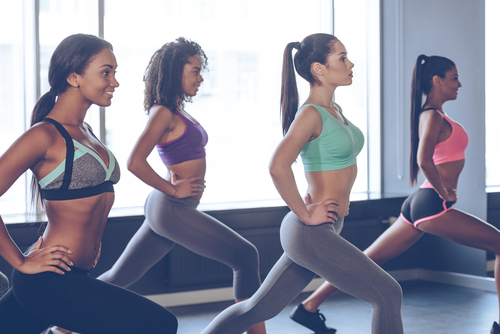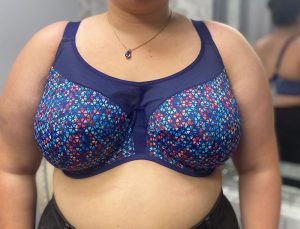Did you know that breasts can move up to 19cm when playing sport!? It’s true.
At Janice Rose Lingerie, we’re on a mission to educate you on the importance of a well-fitted sports bra. According to a leading UK university, 25% of women spend £20 or less on a sports bra. Why, when we spend lots of money on well-fitting active wear, do we not do the same for our sports bras?
Poor breast support during physical activity can result in pain and damage to the skin and even affect your performance.
We’ve come a long way since 1977, when the first sports bra was invented—the Jog Bra. Since then, things have evolved. No longer do we have one bra aimed at one sport. Now we can choose the right bra for the right sport. There are encapsulation bras for larger breasts, compression bras for sports with slower movements, like yoga and combination bras for aerobic sports, like running.
So, the type of sports bra you choose should depend on the kind of sporting activity you’re doing.
The science bit
Recent research by a leading UK university into sports bras showed that:
• 11% of women wear their everyday bra under a sports bra
• 84% of women wear the same sports bra for all their sporting activities
• 74% of women don’t like wires in sports bras
It’s results like this that give us the motivation to guide people towards the right bra for their physical activity.
Sports bras are so important because they support the Cooper ligaments. Cooper’s ligaments are bands of tough, fibrous, flexible connective tissue that shape and support your breasts. They’re named after Astley Cooper, the British surgeon who described them in 1840. These ligaments maintain the shape and structure of your breasts and help to prevent sagging. If we don’t wear a properly fitting sports bra, we damage these ligaments, and that’s when they can stretch and loosen, causing the breast to lose firmness and shape.
Five features for a fab fit
The next time you shop for a sports bra, look for the five following key features:
• Sports bra type – think encapsulation, compression or combination
• Fibre content – a bra made from high-quality moisture-wicking material
• Padding – if padded, it must fit perfectly; otherwise, the breast will move around inside
• Underband adjustment – Look for no rising at the back; if it does, it’s too big.
• Neckline height – every centimetre higher a sports bra is at the front, the greater the reduction of breast bounce.
In our mid-20s, our skin elasticity starts to decline, so you should be wearing a supportive sports bra by this time at the very latest. If you’re reading this thinking, well, I passed that age a long time ago; there’s no point now; you should still wear a supportive bra for more than cosmetic reasons. It’s about performance too.
Putting on a good performance
According to the i newspaper, “more than a quarter of elite female GB athletes have said their ability to train and compete has been hampered by breast pain from ill-fitting bras.”
Wearing the appropriate support can improve your sporting technique and performance. Not only can it reduce the likelihood of breast pain and chafing, but it can also have a psychological impact. You’ll perform better if you’re not distracted by breast movement or how your breasts look in certain sports clothes.
Fit for the future
Choosing the right bra is an emotional experience. From first bras to maternity bras to post-surgery bras, fittings seem to arrive during life’s many ups and downs. Janice Rose Lingerie is committed to supporting people to find the right bra for the right circumstance. As part of this commitment, we want young girls to know how vital breast health is. That’s why we think schools should add sports bras to PE kit lists. So, from bats, balls and bras, preparing girls to excel at sport starts with the right equipment!
Contact us to arrange a sports bra fitting appointment.

